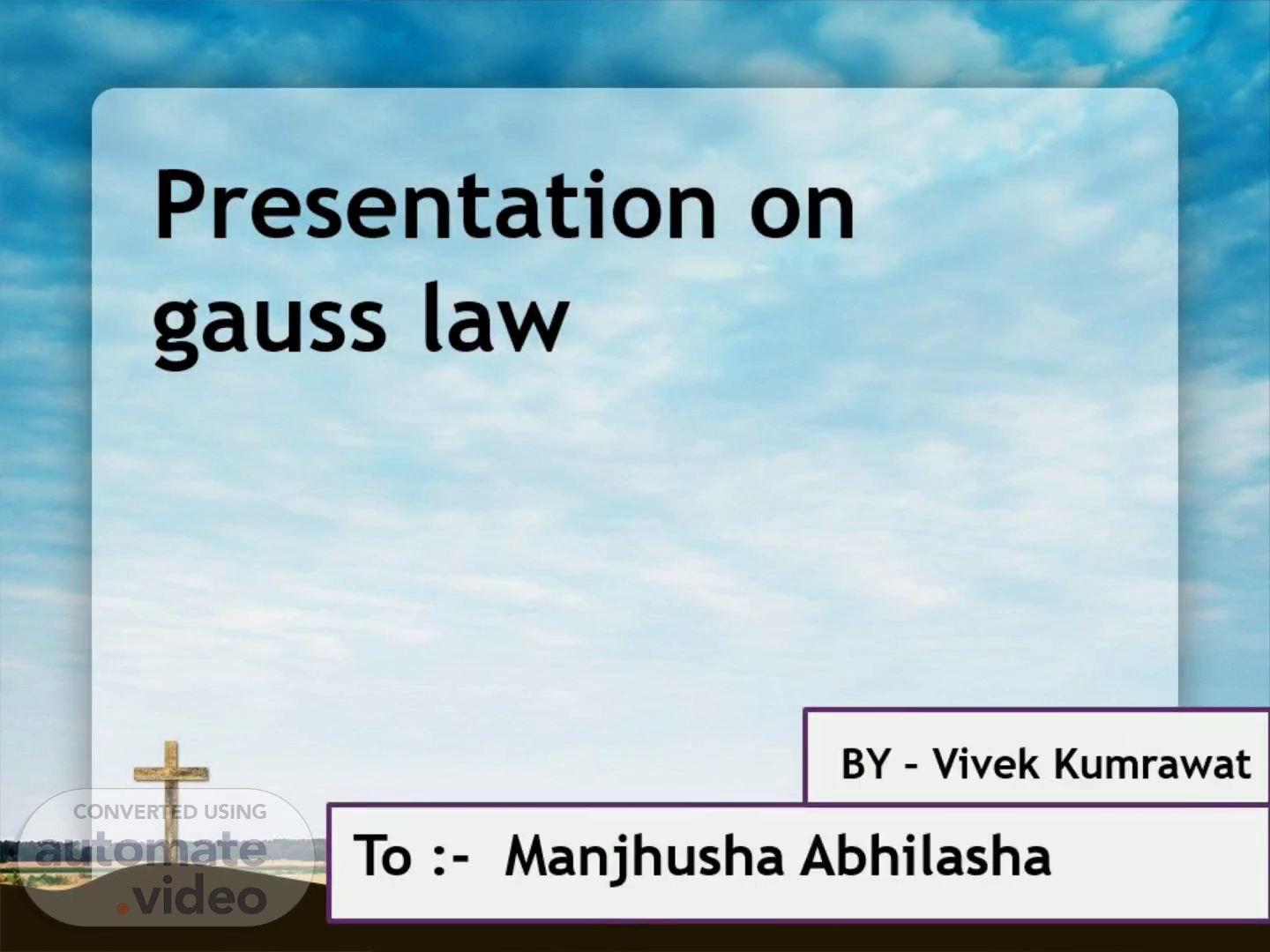Page 1 (0s)
Presentation on gauss law. BY – Vivek Kumrawat. To :- Manjhusha Abhilasha.
Page 2 (3s)
Topic Covered. Gauss law What is Flux ? Gauss law formula Gauss law theorem Applications of Gauss law theorem Solved problem on gauss law.
Page 4 (10s)
The word flux comes from Latin : fluxus means "flow", and fluere is "to flow“. this term was introduced into differential calculus by Isaac Newton . Flux describes any effect that appears to pass or travel (whether it actually moves or not) through a surface or substance. Flux is a concept in applied mathematics and vector calculus which has many applications to physics . For transport phenomena , flux is a vector quantity, describing the magnitude and direction of the flow of a substance or property. In vector calculus flux is a scalar quantity, defined as the surface integral of the perpendicular component of a vector field over a surface ..
Page 5 (55s)
.. GAUSS’ LAW. In physics and electromagnetism , Gauss's law , also known as Gauss's flux theorem , (or sometimes simply called Gauss's theorem) is a law relating the distribution of electric charge to the resulting electric field . In its integral form, it states that the flux of the electric field out of an arbitrary closed surface is proportional to the electric charge enclosed by the surface, irrespective of how that charge is distributed. Even though the law alone is insufficient to determine the electric field across a surface enclosing any charge distribution, this may be possible in cases where symmetry mandates uniformity of the field..
Page 6 (1m 38s)
Gauss Law Formula. As per the Gauss theorem, the total charge enclosed in a closed surface is proportional to the total flux enclosed by the surface. Therefore, if ϕ is total flux and ϵ 0 is electric constant, the total electric charge Q enclosed by the surface is; Q = ϕ ϵ 0 The Gauss law formula is expressed by; ϕ = Q/ϵ 0 Where , Q = total charge within the given surface, ε 0 = the electric constant..
Page 7 (2m 14s)
The Gauss theorem. The net flux through a closed surface is directly proportional to the net charge in the volume enclosed by the closed surface. Φ = → E.d → A = q net /ε 0 In simple words, the Gauss theorem relates the ‘flow’ of electric field lines (flux) to the charges within the enclosed surface. If there are no charges enclosed by a surface, then the net electric flux remains zero..
Page 8 (2m 18s)
www fppt.in•. Applications of Gauss’s law. Deduction of Coulomb’s law Electric field due to charged solid sphere Field due to spherically symmetric charge distribution ( volume distribution of charge ) Field due to a line of charge ‘ Field due to uniformly charged plane ( sheet of charge ) Field due to infinite charged conducting plate Field due to two parallel charged plates.
Page 9 (2m 43s)
Problems on Gauss Law. Problem (1): Find the net electric charge inside the sphere below..
Page 10 (2m 46s)
Thank you for watching.
